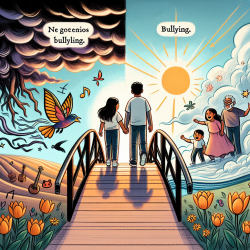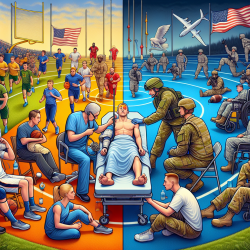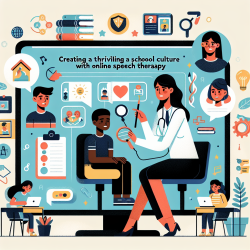Introduction
In the dynamic landscape of speech-language pathology, professionals are increasingly called upon to address complex social issues impacting children's communication and mental health. One such issue is the unique challenges faced by first-generation immigrant adolescents. A recent study, "Do First Generation Immigrant Adolescents Face Higher Rates of Bullying, Violence and Suicidal Behaviours Than Do Third Generation and Native Born?" provides a data-driven exploration of these challenges, offering insights that can inform practice and policy.
Understanding the Research
The study systematically reviews the experiences of immigrant adolescents, revealing that first-generation immigrants face significantly higher rates of bullying and peer aggression compared to their third-generation and native-born counterparts. Factors such as refugee status and advanced parental age were linked to increased parent-to-child aggression, particularly among South East Asian families. Conversely, family cohesion was identified as a protective factor, reducing the incidence of violence.
Interestingly, the study found lower rates of suicidal ideation among most immigrant adolescents, with exceptions noted in specific ethnic groups such as Turkish and South Asian Surinamese females in the Netherlands. These findings highlight the complex interplay of cultural, familial, and societal factors in shaping the experiences of immigrant adolescents.
Implications for Practitioners
For practitioners in speech-language pathology and related fields, these findings underscore the importance of culturally sensitive approaches. Here are some actionable steps:
- Enhance Cultural Competence: Develop a deeper understanding of the cultural backgrounds of immigrant adolescents. This includes recognizing the potential for intergenerational cultural dissonance and its impact on communication and mental health.
- Promote Family Cohesion: Encourage practices that strengthen family bonds, as this has been shown to mitigate the risks of violence and aggression. Family-centered interventions can play a critical role in supporting immigrant adolescents.
- Advocate for Safe School Environments: Work with schools to create inclusive and safe spaces that reduce bullying and peer aggression. This can involve training for educators and developing anti-bullying programs that are sensitive to the needs of immigrant students.
- Collaborate with Community Resources: Engage with community organizations that support immigrant families. These partnerships can provide additional resources and support systems for adolescents facing challenges.
Encouraging Further Research
The study highlights gaps in the existing literature, particularly in understanding the nuanced experiences of different immigrant groups. Practitioners are encouraged to engage in or support research that explores these areas further. This could involve longitudinal studies that track the long-term outcomes of immigrant adolescents or research that examines the effectiveness of specific interventions.
Conclusion
By integrating the insights from this research into practice, speech-language pathologists and other professionals can play a pivotal role in improving outcomes for immigrant adolescents. Through culturally informed interventions and advocacy, we can help bridge the gap and create a more inclusive and supportive environment for all children.
To read the original research paper, please follow this link: Do First Generation Immigrant Adolescents Face Higher Rates of Bullying, Violence and Suicidal Behaviours Than Do Third Generation and Native Born?










